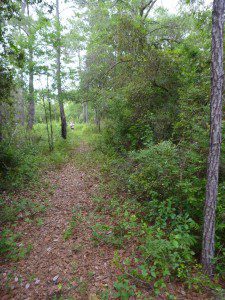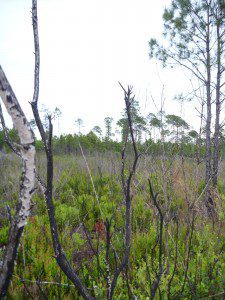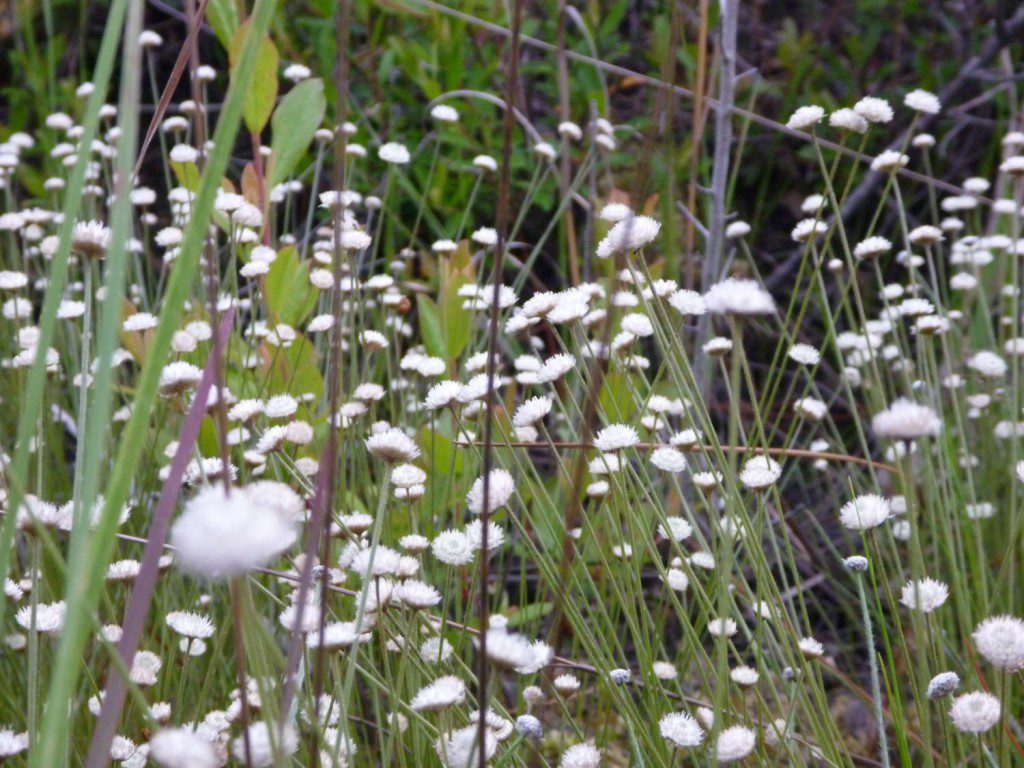Watch and listen: what does a Wilderness sound like at night?
Rob Diaz de Villegas WFSU-TV
 It seems like a good premise for a movie: Under a full moon, on Friday the thirteenth, a group of people wander in the Wilderness. You could be a part of this movie on Friday, June 13 (8 pm), as Haven Cook of the U.S. Forest Service leads a hike into the Bradwell Bay Wilderness. It’s one of a series of events being held in the Apalachicola National Forest to celebrate 50 years of the Wilderness Act. Passed in 1964, the act designated certain protected areas as Wilderness.
It seems like a good premise for a movie: Under a full moon, on Friday the thirteenth, a group of people wander in the Wilderness. You could be a part of this movie on Friday, June 13 (8 pm), as Haven Cook of the U.S. Forest Service leads a hike into the Bradwell Bay Wilderness. It’s one of a series of events being held in the Apalachicola National Forest to celebrate 50 years of the Wilderness Act. Passed in 1964, the act designated certain protected areas as Wilderness.
So how is a Wilderness any different than any other protected land? We are surrounded by the Apalachicola National Forest, St. Marks Wildlife Refuge, Wildlife Management Areas, state parks, and large greenways. There are some waterways near here where you could spend hours and not see many signs of civilization. It’s already plenty wild around here, right?
A Wilderness area restricts the use of motorized or mechanical equipment. Not even a bicycle or, as the sign at the trailhead states, a hang glider (the WFSU hang glider was sadly left behind in our vehicle). No structures can be placed on the grounds, though any that were historically found there can remain. It has to, as the act states, retain “its primeval character and influence, without permanent improvements or human habitation.” Section 2(c) of the 1964 Wilderness Act. The primary force affecting the Wilderness must be nature, not man. The idea is that you can go there and experience total solitude in nature, and that means freedom from the buzz of a chainsaw or seeing that glider over your head.
The primary man made feature of the Bradwell Bay Wilderness is the unpaved trail that runs through it. In the pine flatwood area leading up to the swamp, it was an old road that Haven believes might have led to an homestead, likely belonging to the Bradwell family. It has a ditch running along either side of it, where you can occasionally see pitcher plants growing (as we learned a few weeks ago in another part of the Apalachicola National Forest, carnivorous plants love ditches and their found-in-nature equivalents). There is an old bridge that takes you over a small creek that drains into the Sopchoppy River. While they won’t put any forest roads through the Wilderness (its boundaries are formed by forest roads), the trail is maintained as a part of the Florida National Scenic Trail. In places, that doesn’t mean much more than an orange blaze on a tree.
Some Wilderness areas don’t even have that level of human footprint. The Mud Swamp/ New River Wilderness, also in the National Forest, is one. In general, Wilderness areas in the Eastern United States tend to be smaller and less isolated than in the less populous Western half of the country. In 1975, congress passed the Eastern Wilderness Act, which created the Bradwell Bay Wilderness. This act acknowledges that “additional areas of wilderness in the more populous eastern half of the United States are increasingly threatened by the pressure of a growing and more mobile population, large-scale industrial and economic growth, and development and uses inconsistent with the protection, maintenance, and enhancement of the areas’ wilderness character.” Section 2(a)(3) of the Eastern Wilderness Act.

Often in the Forest, you’ll see these burnt woody shrubs among the palmettos between the pines. Longleaf and slash pine can tolerate fire and palmettos grow back, but hardwood trees do not fare well in this ecosystem.
It should also be noted that, though the area is intended to be as much as possible like it was when this country was founded, the pine flatwood area is a second growth forest where you can still see rows of planted slash pine. Like many of the places that we consider wild around here, it had been cut at some point. It is, like the rest of the forest, maintained by prescribed fire. This is to replicate the fire regime that occurred naturally before the area was settled by Americans. Since the Wilderness won’t burn every three to four years without assistance, The Forest Service keeps the “primeval” character of the area by simulating the regime that had occurred there.
We didn’t make it to the swamp, as we were previewing the full moon hike, though a little earlier to get more shots in the light. We’ll have to save that for another EcoAdventure. If you’re going on June 13, the sun will set within the first hour of the hike, and there will be mosquitos. And also ticks. This isn’t out of the ordinary for a hike at this time of the year. But when the moon comes out, you’ll see the Wilderness entirely differently. More strikingly, it will sound different. And, you know, there’ll be that slasher movie plot thing happening.
Coming Up
One value of the Bradwell Bay Wilderness is that, without motorized vehicles or human made structures, the stormwater runoff flowing from it to the Sopchoppy River is clean. We spend a lot of time on our EcoAdventures visiting well preserved, healthy land and water resources. On our last EcoAdventure of the season, we’re going to visit some places where you don’t want to touch the water or eat fish from it. We’re talking drinking water (which is clean) and stormwater. Wait until you see the bodies of water that collect our runoff.
Follow us on Twitter @wfsuIGOR

